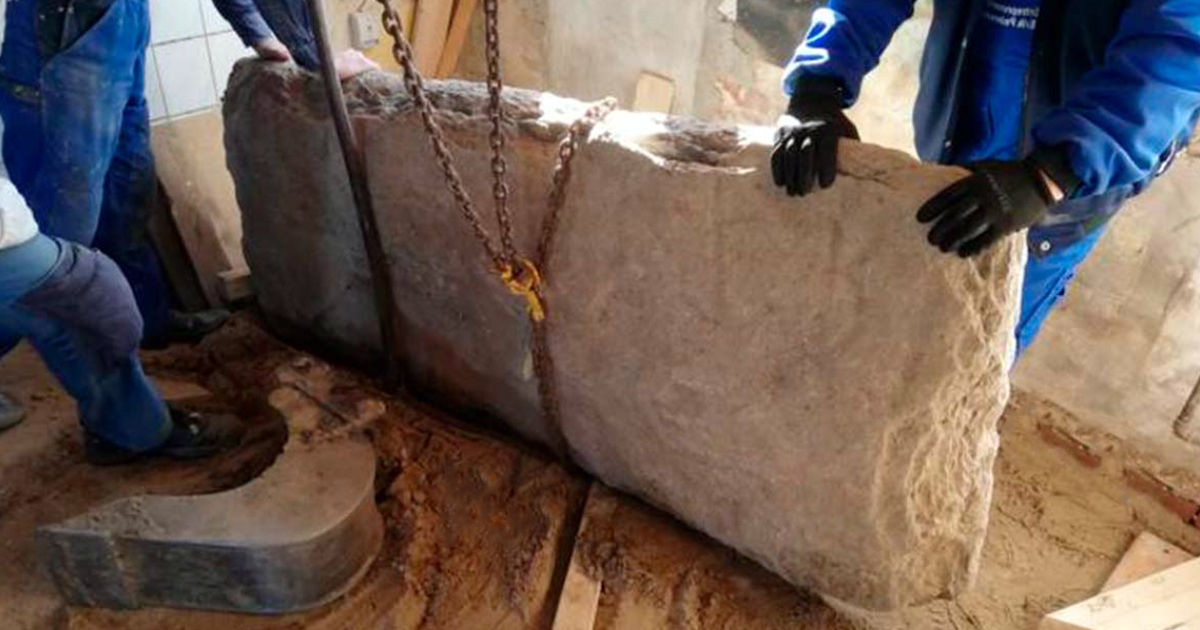Embarking on an Exploration:
Denmark, famous for its deep historical roots, has once again sparked the interest of archaeologists and history buffs with a remarkable find. An unearthed runestone in Denmark has brought to light ancient Norse connections in the region, offering a fascinating peek into its vibrant past. This extraordinary discovery is set to revolutionize our perception of Danish history during the Viking Age on a larger scale. Let’s dive into the specifics of this gripping archaeological breakthrough.
The Unveiling of the Mysterious Artifact:
Located in a field in Hørning, Denmark, near Aarhus, the newly discovered runestone towers at nearly two meters tall, showcasing a meticulously etched inscription in runic script, an ancient writing system utilized by the Norse during the Viking Age.

Dating back to the 10th century CE, the inscription on the runestone offers a unique perspective on the interactions among Norse communities in Denmark and beyond. Linguistic analysis of the inscription suggests ties between Denmark and the broader Norse world, particularly with regions like Sweden and Norway.
Decoding the Enigmatic Runic Engraving:
The complex arrangement of runes on this recently uncovered stone poses a challenging puzzle for researchers and linguists. The intricately carved runes convey a tale or message from bygone times. By delving into the intricacies of the ancient script, scholars aim to reveal the concealed mysteries within these enigmatic characters.
Preliminary attempts to interpret the runestone indicate that it likely commemorates an individual, potentially a respected warrior or chieftain, whose name is partly obscured by weathering and erosion. The readable portions of the inscription suggest that the stone was erected to honor the accomplishments and valor of this esteemed figure.
Norse Bonds and Cultural Interactions:
The discovery of the runestone not only underscores Denmark’s importance within the Norse realm but also highlights the extensive cultural exchanges that characterized the Viking Age. Positioned as a hub between Scandinavia and the rest of Europe, Denmark facilitated trade, communication, and the exchange of ideas, fostering a dynamic maritime culture.
Furthermore, the abundance of runestones in Denmark reinforces the idea that these ancient monuments functioned as markers of historical events and personal triumphs. They serve as tangible representations of the Norse people’s desire to immortalize their legends, folklore, and societal norms in stone, ensuring the preservation of their cultural heritage for generations to come.
Reconstructing the Historical Fabric of Denmark:
The discovery of the runestone in Denmark marks a pivotal piece in unraveling the complex history of the region. Further exploration of this remarkable find is poised to offer valuable insights into the political, social, and cultural dynamics of the Viking Age.
By integrating information from runestones, archaeological excavations, and historical records, researchers can gradually piece together a more holistic narrative of Danish history. This enhanced comprehension will allow us to grasp the diverse influences that shaped Denmark’s past and its contributions to the broader Norse society.
Preserving the Past for Future Generations:
The unearthing of the runestone underscores the significance of archaeological endeavors in safeguarding our shared heritage. It serves as a reminder that beneath the earth’s surface lie numerous untold stories waiting to be discovered.
We must persist in safeguarding and conserving these invaluable historical artifacts for the benefit of future generations. Through meticulous excavation, documentation, and preservation, we can ensure that the marvels of the past, like this remarkable runestone, endure as a tribute to the wisdom and resilience of our ancestors.
Concluding Thoughts:
The revelation of the runestone in Denmark unveils a captivating segment of Norse history’s intricate tapestry. This extraordinary find not only strengthens Denmark’s ties to the broader Norse world but also enlightens us on the cultural diffusion that characterized the Viking Age.
As researchers unravel the mysteries hidden within the runestone’s inscription, our understanding of Danish history stands on the verge of a significant evolution. By connecting these historical fragments, we can craft a more nuanced narrative of Denmark’s role in shaping the legacy of Norse civilization.
The discovery of the runestone serves as a poignant reminder to preserve our cultural legacy. It inspires us to delve deeper into our past, uncover the secrets of our forebears, and cherish the fascinating tales they carved in stone for us to explore.
